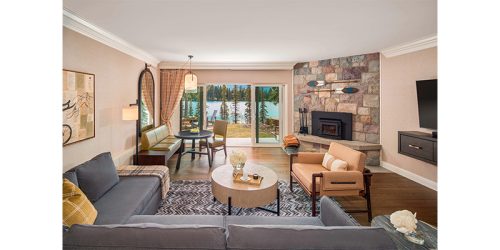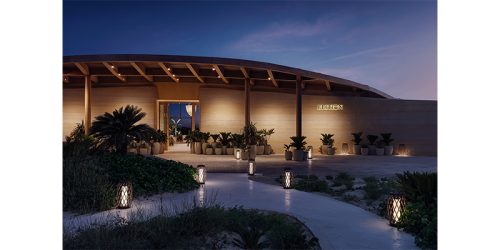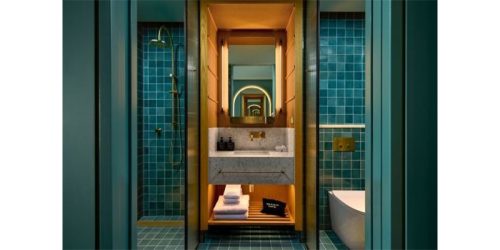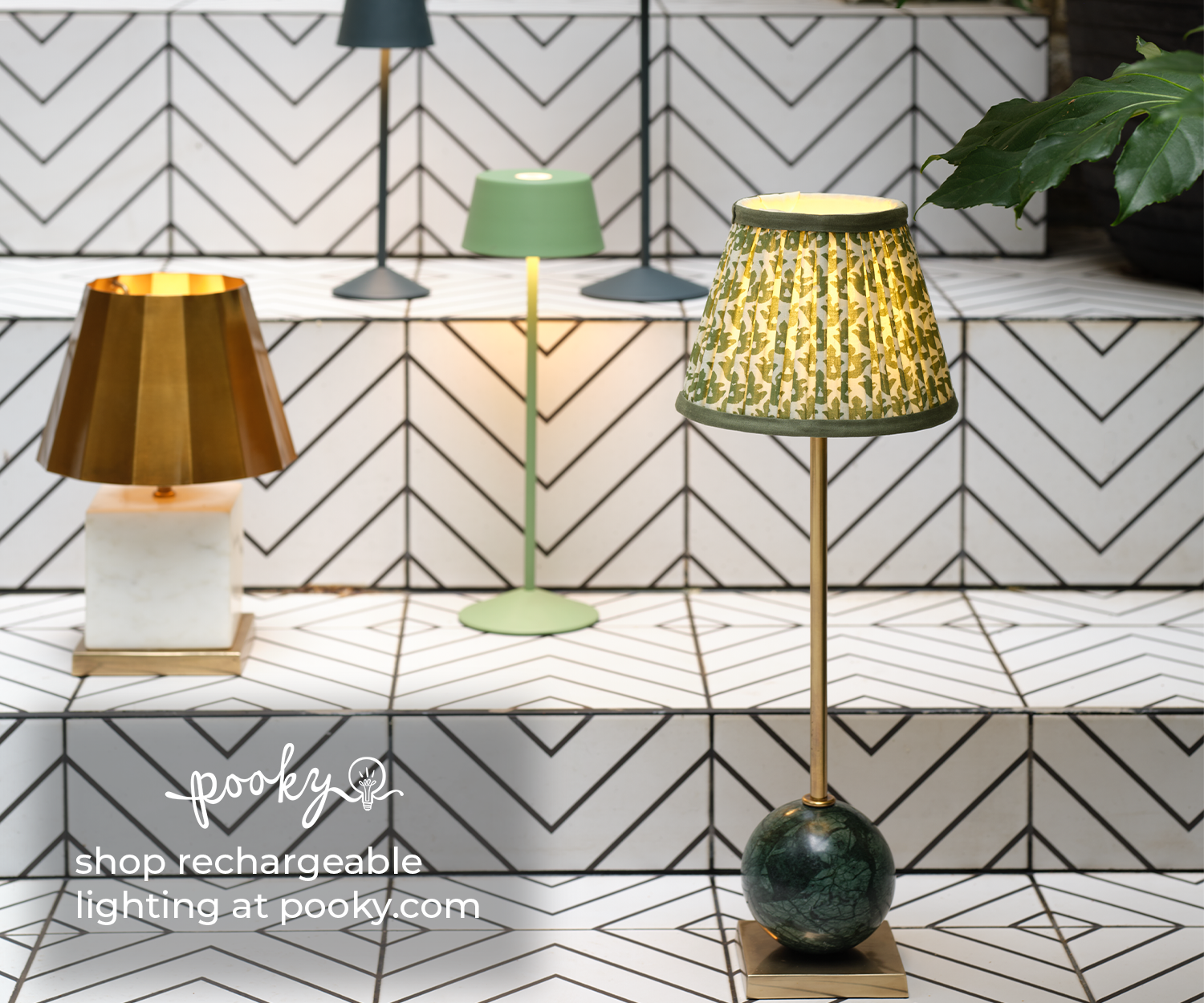DIGITAL ROUNDTABLE: LIGHTING DESIGN with chelsom
While virtual meetings are still the norm, SPACE has played host to a number of online discussions. With Sophie Harper moderating these sessions, we find out more about the hot topics in the industry from some of our favourite designers. This issue we talk about the importance of lighting and the direct impact it has on interior design within hospitality projects.
THE PANEL…

WILL CHELSOM,
MANAGING DIRECTOR, CHELSOM
Will is Managing Director of decorative hospitality lighting company, Chelsom. The family business was started by Will’s grandparents in 1947 when it began as a humble lighting and furniture shop in the UK seaside town of Blackpool. Today, Chelsom is one of the world’s leading suppliers of decorative lighting to the international hospitality and marine sectors.
Will started with the business in 2006 where he was responsible for business development in both the UK and overseas markets. Having won projects with major hospitality customers and designers around the world, he then went on to initiate the company’s jump into the marine sector where Chelsom now have huge success working on major cruise ship projects, private yachts and ferries.
As Managing Director, Will currently leads his project management teams and fronts the creative direction for the business. He continues to have a strong presence in the marketplace, meeting clients and developing business. Will also designs all of Chelsom’s lighting collections alongside his father and Chairman, Robert Chelsom. Together, every two years they develop a brand-new collection of lighting specifically for the hospitality and marine markets. Their designs can be found in amazing projects all over the world.
ELIZABETH LANE,
PARTNER, RPW
Elizabeth is RPW Design’s highly accomplished Partner and has been vital in the maintenance of RPW Design’s reputation as an interior design studio where beautiful interiors and operational functionality work in complete harmony.
Working closely with the design teams, Elizabeth guides the teams throughout the design process to deliver first class outcomes suiting diverse projects. From luxury city hotels, to countryside golfing venues and exclusive private clubs, Elizabeth has an extensive understanding of hospitality operations having worked for many years as a design manager for a major international brand.
JAMES DILLEY,
DIRECTOR, JESTICO + WHILES
James joined Jestico + Whiles in 1994 and since then has specialised in architectural and interior design of hospitality projects.
As Director, James leads the highly respected hospitality and interior design studio with particular expertise in the design of hotels, as well as restaurants and bars, clubs, specialist retail and cinemas.
James has amassed over 20 years of experience in this sector working under appointment as either architect or interior designer and under combined appointments to provide a comprehensive service such as the remarkable W Edinburgh, currently in design. He has also led teams on hotel projects both in the UK and internationally, including Malta, Marrakesh, Berlin, Amsterdam, Tbilisi and Kyiv.
James lectures internationally in hotel design and is a judge for prestigious international award panels including World Interior News Awards, the Blueprint Awards and the International Hospitality Awards.
ALAN MCVITTY,
FOUNDER & CEO, M STUDIO
Director of M Studio, which he founded in 2002, Alan’s career spans over 30 years specialising in both commercial and luxury residential projects.
“We take pride in providing an excellent architectural interior design service, building strong working relationships. We approach each new project with a fresh new attitude and believe in effective communication with our clients to deliver strong yet cost-effective designs. These designs combine a blend of innovative ideas along with practical solutions to make any concept a reality.”
M Studio provides a broad range of interior design services ranging from initial concepts and design detail development, through to full FF&E scheduling and on-site project management, which allows their clients to determine precisely the level of involvement they have in their projects.
TOM THOROGOOD,
ASSOCIATE, DEXTER MOREN ASSOCIATES
Tom has recently joined Dexter Moren Associates (DMA) and brings with him over 14 years’ experience in the luxury hotel, resort, residential and retail sectors
which has seen him lead on projects for large well-known operators and small independent brands both in the UK and internationally.
Tom plays a key part in the growth and evolution strategy of DMA as the practice draws on its core hospitality experience to expand its portfolio within the BTR and residential sectors, as well as luxury hotels throughout the UK, Europe, Middle East and Africa. He is involved in all aspects of the design of projects, from concept through to completion, ensuring client and operator expectations are not only met, but exceeded.
Tom is currently working on a Grade II Listed hotel in central London as well as a 5-star resort in Portugal among other projects.
The panel gathered online to be quizzed on their thoughts and opinions on specific lighting design topics with Will Chelsom putting the questions to the designers…
WILL: “How important is lighting in the interior design of hospitality spaces?”
ELIZABETH: “I think it’s absolutely crucial – it’s critical. You can do a fantastic design but if it’s not lit well then it doesn’t look great, so there can be no argument in my mind that it is really, really important.”
JAMES: “Well it’s very simple, you can’t see without light. Flipping it the other way we need to use sight as much as we can to enhance what we’re doing, and it comes down to informing the choice of everything – the colour and the texture in particular – you have to understand how light works. One of my favourite lighting designers said ‘light sticks to rough surfaces but it bounces off shiny surfaces’ it’s not a technical description but it means you can manipulate things from an early stage in very basic terms.”
TOM: “It is definitely because you’re taking into account the space; whether there’s natural light coming in or high ceilings, it is massively important as it can be such a feature of the design.”
ALAN: “As everybody’s said, it’s extremely important, it’s vital to every scheme because it’s about creating an emotion within the interiors we create and lighting very much accentuates the moods that we want to create in those spaces. Quite often in larger spaces, it’s vital that we use not only natural light but architectural lighting to add to that atmosphere.”

WILL: “What are the main factors that influence your decision making when you’re specifying lighting products or designing custom lighting?”
ALAN: “I think things that are key for us is actually working with partners that really understand the studio’s aesthetic. We’re very fortunate, we work very much in the luxury sector and so it has to be about the quality, but as we also know there are demands within public spaces that have to endure the use from guests so there’s a balance between the beauty and aesthetics of a product and the durability.”
ELIZABETH: “Obviously you’ve got this whole image in your mind of what you want the space to look like, so as we’ve said the lighting is so important and I completely agree with Alan, it’s the light output obviously that’s key: how does that fit in, what does it look like, and what does it feel like. It has to have that tactile element as well if that’s appropriate, so all of those things are absolutely key. As a practice we always want to see everything we’re specifying, where possible, so we can really judge what the quality is like.”
TOM: “The design, the finishes, the cost. The finishes are always difficult, especially with metals, if it’s off the shelf or even vintage, trying to make sure the metals you’ve chosen are matching. Even with custom sometimes, in order to keep within budget you try to use standard finishes from the manufacturer and you sometimes have to accept that it’s not always going to be an exact match.”
WILL: “It’s something we find. Brass is brass, many would say, but there are ten million different types of brass if you really know your stuff, it’s very difficult to always get a specific type of brass to match another.”
ELIZABETH: “You can guarantee we’re never going to be 100% happy with what’s in a standard range – we’ll always want something different!”

WILL: “Are there any particular finishes or materials right now that you favour in your lighting products?”
ALAN: “In terms of materials we’re currently specifying, bronze is definitely the go-to. Looking at different types of finish, hammered, brushed, rock crystal – if you have the budget – or a good faux rock crystal! Alabaster is always good too. It is all about trying to find natural materials and then as we know sometimes because of budgets or one thing or another, we’re looking for the best alternatives and that’s why it’s so important that you partner with the right manufacturer.”
ELIZABETH: “Similar to Alan really, bronze, brushed brass is always quite popular but truthfully it varies depending on what your project is, where it is and what the style is. It’s not always going to be one thing, we want variety, we’re always keen to see what’s coming through, what’s the next thing that we can have that’s going to be interesting. The idea is that the next project doesn’t look like the last project, it’s always something different, and that’s what we’re really looking for – that point of difference.”
WILL: “In what respect do you consider environment or sustainability when you’re considering the specification of lighting products?”
ELIZABETH: “If you’re doing something for a newbuild then you’ve got more scope to build in all the things that you need and so then it’s about where are your lights coming from. Certainly more recently we’ve noticed a trend for having things that are more local and we do think, when we first start a project, about where it’s going to be and look at where we’re sourcing from generally – not just for lighting. Sometimes during the value engineering process that can all go out the window, but we are thinking about it and trying to bring in as much as we can but every project’s different.”
TOM: “More and more clients are doing accredited sustainable projects – I was working on a Six Senses ski resort in Austria last year and for that they were doing a lead accreditation and aiming for platinum so we had to be on top of it. We were speaking to suppliers to find out what the route of their products were and there was one that was manufacturing in Germany but then shipping it to America only to come back to Austria, so we obviously couldn’t specify them.”
JAMES: “One of the most significant things at the moment is where your power comes from. If it’s cleaner power, then you’re immediately saving more than you can make by some of the other gestures. The other thing I think it would be nice culturally to get people to accept is motion detectors. What’s the point in lighting a hotel corridor between the hours of two and six in the morning – there’s no point at all, it’s not justifiable, but there’s a standard culturally the operators are concerned that that half a second when somebody comes out of the door or the elevator where the lights come on that it feels strange, so if we can get over those slightly bizarre hang-ups then I think we can start doing some small things which will mean a lot.”
ALAN: “I think as a whole, it’s something that everyone needs to be aware of and make a conscious effort to be mindful of when we’re putting schemes together and specifying suppliers for a project. For us, if you’re looking at a product and you’ve got two manufacturers and one is accredited, it’s more likely you will go with the accredited similar product. Because we work with a lot of operators their policies also influence how we work or how we specify products so it’s a great move and it’s the right direction and I think more suppliers will embrace greener technology.”

WILL: “How big a role does technology play in lighting for your projects?”
JAMES: “Too much technology is just a negative, people get confused, they get frustrated, things should be intuitive. We know that we can do many things with colours, we can change temperatures, we can change intensity but there’s a limit to how much variation people will need from playing with it in the first 30 seconds of being in a room and I think just the same as all technology, it should be something that happens to you without realising and it should work nicely and intuitively.”
TOM: “The same as James said, it’s about making sure that it is really intuitive for both guests and the staff who are going to be using it in terms of changing the lighting schemes. The other thing is getting away from there being loads of buttons back down to trying to get as few as possible and also making sure any icons are universal.”
ELIZABETH: “It depends on the project, obviously. You have to start with each one and look at what it needs. I think a good lighting designer just brings another layer and we’re really used to working with them, we see them as part of our team, so it’s a great synergy. We did a project a few years ago now where we had to fill this huge atrium and that’s where a lighting designer brought a whole new layer to that and it was really successful. In that installation technology was really important but also at the lower level with the decorative lighting, it was really simple because they were doing two different things.”
ALAN: “Technology is changing so rapidly that we can future-proof things as we go along, and that’s why it is important to partner with specialist lighting designers because they’re at the front of the curve in terms of knowing what the latest projects are. Ultimately, as designers, we know what we want it to look and feel like but it’s a lot more technical, therefore you need to work with a specialist who will embrace and look after that element of the project.”
WILL: “How important is it that your lighting suppliers, so people like us, play a role in project management?”
JAMES: “We’ll always speak to contract suppliers, and it’s in everybody’s interest to limit the number of suppliers for a particular typology so having 20 different light suppliers is not as good as having two or three. What we want is really full engagement in the project with the lighting designer who can talk to us about how things perform, the effects we’re going to get, not just what they look like, somebody who knows really exactly what they’re talking about, somebody who can get inside the project and contribute more than just being responsive. We’re looking for a collaborative experience.”
ELIZABETH: “In terms of project management what we’re looking for is a company that has an understanding of what we’re trying to achieve. We’re probably not really designing for a bedroom rollout, we’re not necessarily designing bespoke, it’s what I might call ‘off the shelf plus’ because quite often you might have a fitting that we like but there might be X, Y, Z things about that fitting that won’t be quite right for this project. It might require us to have somebody we can talk to to say we love that fitting, it’s really perfect for the scheme but can we customise it in the following way.”
ALAN: “It’s important for us to have one point of contact in terms of working with a supplier on a project that we don’t have a myriad of different departments to deal with and that’s why with Chelsom it’s great because if we’re working on a marine project, we’ll work alongside John or if it’s land- based then we’ll work alongside Will and that makes it easier. Also, technical aspects of a project that we can put you in direct contact with the contractor and you can iron out any of the problems. I’m not an electrician, but you can speak their language and really understand so it is a really helpful partnership, I think that is really, really important.
To sum up, the panel had a number of ideas on the relevance of lighting within their hospitality projects, and all agreed how crucial lighting was to the success of a finished interior scheme. Most interesting was the unanimous feeling of choosing the right lighting partner to collaborate with on such projects, and that having an expert lighting designer to advise on all aspects of the lighting design was integral to the ease of and smooth delivery of the finished project.
Will rounded off the conversation by telling us a bit more about how Chelsom works with design studios to achieve this: “People know us as a lighting company, but I actually see us as a projects company because we are so focused on hospitality projects – we are not, by any means, a retail outfit.
A lot of what we do is taking a design concept from its very early stages, taking it through the prototype process, taking it through the costing and quote stages, then into manufacture and then through to delivery. We manage the warranty process as well, so the after sales service is a massive part of what we do. It’s not just transactional sale – thanks very much, here’s your lighting, off you go – it’s a massive, long process.
I’ve just delivered a project that I started 12 years ago. It’s changed so many different times, the ownership has changed, the design has changed, and we’re just getting to delivery stage now and that’s the essence of a project, isn’t it – the twists and turns. We totally understand the essence of a hospitality project and everything that goes with it so it’s that idea that it’s not just a sell, it’s managing customer expectation, designer expectation, budget expectation, understanding the brand standards for the hotel group and managing the different facets of it all.”
Want to host a digital roundtable event with SPACE? Contact Travis Posthumus travis@purplems.com









